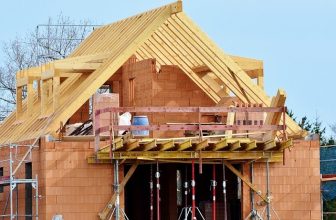 Paul Davis, co-founder of the proptech platform Nimbus, has called for clearer definitions of ‘grey belt’ land to ensure the success of Labour’s ambitious housebuilding and planning reforms.
Paul Davis, co-founder of the proptech platform Nimbus, has called for clearer definitions of ‘grey belt’ land to ensure the success of Labour’s ambitious housebuilding and planning reforms.
He claims that there is significant confusion across the industry regarding the term’s definition.
This week, deputy prime minister Angela Rayner announced a comprehensive overhaul of the planning system. All councils in England will receive new mandatory housing targets as part of the government’s plan to build 1.5 million homes by 2029.
As part of this initiative, councils will be required to review their green belt land to meet these targets, identifying and prioritising ‘grey belt’ land. According to the government, grey belt includes land on the edge of existing settlements or roads, as well as old petrol stations and car parks. However, individual councils will have the final say on what qualifies as grey belt.
“We need to understand how grey belt will be defined. Only then can we identify which sites fall within that definition to establish the viability of the proposals,” said Davis.
The term ‘grey belt’ has sparked mixed reactions since its introduction. It refers to transforming poor quality and neglected spaces within the green belt into communities with essential housing provisions. “However, the controversy lies in the fact that it still involves building on green belt land, which covers roughly 13% of England and has historically been protected,” Davis explained.
Davis highlighted the industry’s confusion over the parameters of grey belt: what will be classified under it, how the planning process will work, and how it will differ from current green belt and brownfield regulations. “Without these details, it’s just a name,” he said.
Knight Frank has reported that between 100,000 and 200,000 new homes could be built on grey belt sites, underscoring the potential value of this land in meeting housing targets. Davis emphasised the importance of specific site details in unlocking this potential.
“Through examining our data, we can identify not only the plots that could fit the grey belt criteria but also assess the feasibility of those sites from a planning and financial perspective, so they can be unlocked as opportunities.”
Davis concluded: “If housing is our top priority as an industry and for the government, this seems like a very viable route. It holds the promise of new homes and revitalised communities but also raises questions about environmental standards and economic viability.
“To reach its targets, Labour will likely need to reimagine the green belt itself.”


Comments are closed.